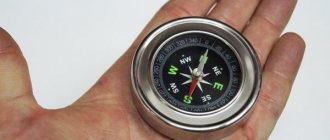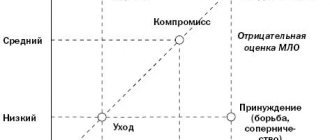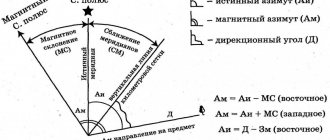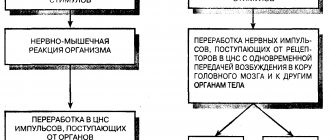Hiking makes a person change not only his views on a comfortable vacation, but also his worldview. Nature allows us to understand how important harmony is within. Creating comfort in the forest is not easy; the main thing is to be able to anticipate possible non-standard situations. Understanding natural phenomena is a healthy part of any trip.
Many modern people mistakenly believe that the countdown of time is recorded and displayed on watches and phones. In fact, time is driven by the planet and nature, therefore, knowing the little secrets of the world around us, you can find out the time in any situation.
A little history
Once upon a time, people lived and had no idea that clocks or stopwatches existed. It's hard to imagine something like this, isn't it? Twenty-first century humanity can hardly imagine life without numerous gadgets and devices. Young people are increasingly asking the question: how did they recognize the time early?
Sundial
There were five main ways to determine the approximate time of day. Each method has disadvantages and advantages, which I will discuss in this article.
- Moon. The Earth satellite helped determine the time, of course, this method can only be used at night, but sometimes it helped people out.
- Sun. The main source of information about the time of day. With the help of observations of the Sun, sailors and travelers determined time quite accurately.
- Stars. Every navigator knows how to navigate with the help of the stars.
- Birds. Animal and bird watching also became popular among people who lived in the distant past.
- Flowers. Famous botanists learned to observe plants and left their mark on world biology.
Determining the time of day is important for the correct distribution of tasks and goals that need to be completed. During a camping trip, a detailed plan is drawn up with the help of time, including setting up a tent and preparing food.
LHow to navigate correctly in the forest, read the article: How to determine north and south without a compass, day and night
How to find out time by the sun
People greet the dawn
The sun is a source of heat and light. Determining time by the sun is suitable for the summer and winter periods of the year, when the weather is sunny and clear. The main disadvantage is the inability to use the sun to determine time at night and in cloudy weather.
- Palm. We find an open space in which the horizon is clearly visible. We raise our palm so that the back side faces the face, the upper index finger coincides with the lower edge of the sun. We place the thumb so that it does not interfere with correctly determining the time. If located below the horizon, then sunset will be in less than 60 minutes. If this is not the case, then we begin to try on the second palm, but so that it matches the thumb with the little finger of the first hand. How many hands can there be between the first palm and the horizon? Each palm equals one hour. If you need to define more precisely, then we equate one finger (the thumb does not count) to 15 minutes.
Telling time by the sun using your palm - Sundial. Making a sundial is easy, but you need to spend time putting together the right device. Take a wooden board measuring 20*30 centimeters and a nail 8 centimeters long. We drive a nail half a centimeter into the board, then put a 15 centimeter long plastic straw over the nail. We place the board in an open space in sunny weather at dawn. It is important that the shadow does not fall on the board throughout the day; it cannot be moved. Then we set the buttons opposite the shadow every hour and indicate the number. The solar device is ready. Remember that it is correct to use them only in the same place where they were when the numbers were installed.
L An original method of how not to get lost on a hike: Orientation by sound - the advantages and disadvantages of the method
Location orientation
When surviving in many situations, a person must first of all be able to navigate the terrain and know where to move. To do this, you need to correctly determine the cardinal directions. There are several ways to determine cardinal directions. The most famous and, perhaps, the simplest of them is determining the cardinal directions using a compass. The compass needle points to North (N), and with the help of a compass you can also determine other cardinal directions: E - East, W - West, S - South.
However, not always in a situation where you need to navigate the terrain, a compass is at hand. Therefore, it is necessary to know how to determine the cardinal directions without a compass using the sun, clock, stars, and moon.
Determining north by the North Star.
The method of determining north by the Polar Star is suitable only on a more or less clear night in the northern hemisphere , when stars are visible in the sky.
In order to navigate by the North Star you need to:
- Find the constellation Ursa Major (Big Dipper) in the sky.
- Plot the distance between the two outermost stars five times in a straight line towards the constellation Ursa Minor (small dipper). The delayed segment will coincide with the last star in the tail of Ursa Minor. This will be the North Star, from which you can mentally draw a plumb line to the Earth. This will be the direction to the north.
Determination of the cardinal directions by the constellation of the Southern Cross.
This method is suitable for determining directions in the southern hemisphere.
The Southern Cross constellation consists of four bright stars mutually arranged in the shape of a cross. To more accurately determine the South, use a straight line drawn through two stars located to the left of the Southern Cross. The intersection of this straight line and the straight line laid off from the Southern Cross will be the direction to the South.
Determining the cardinal directions by the Sun and the clock.
This method is suitable for determining direction during the day, namely from 6 am to 6 pm.
In sunny weather, the cardinal directions can be determined if you have a watch. To do this, you need to position the watch so that the hour hand points to the Sun. Divide the angle between the hour hand and 12 o'clock in half, and the line dividing this angle will point to the South, and the South before 12 o'clock will be on the right side of the Sun, and after 12 o'clock on the left.
Find out what time it is by the stars
The disadvantage of this approach is that it can be used in clear weather, and it is also impossible to determine the time in the Northern Hemisphere in winter. The accuracy of the method is poor, but sometimes it is the only way to find out the time.
Determining time by stars
How to determine time by the stars?
First you need to find the Big Dipper in the sky. To do this, use a compass to find the north direction (north-south, west-east). The constellation includes 7 stars that form an imaginary bucket with a handle. When we have found this constellation in the night sky, we need to concentrate on the right side of the bucket. We count two stars from the right side up, build an imaginary line. This is done to find the North Star. You can recognize the North Star by its expressive bright glow. The found star will become the center of the dial. We divide the dial into imaginary 24 divisions, the opposite handle of the bucket will indicate the time.
L How to determine the weather using folk remedies, read in the article: Ways to find out the weather by signs for tomorrow
Determining time by the moon
Some introductory information. The lunar month is somewhat shorter than what is usual for Europeans and is 29 days 12 hours 44 minutes, i.e. The phases of the moon replace each other approximately 29.5 days.
New moon
- beginning of the month: in this phase the Moon is not visible.
First quarter
- visible crescent moon is observed half a circle in the first half of the night, sets in the middle of the night.
Full Moon
- The Moon is observed in the form of a disk-circle, rises in the evening and sets in the morning, i.e.
shines all night. Last quarter
- the moon is observed half a circle in the second half of the night, rising in the middle of the night.
Determining time using the moon and compass when the moon is not full
Let's say the moon is arriving
. Let's point north on the compass dial to the Moon (with the letter C to the Moon), count the degrees from the northern end of the magnetic needle to this direction. We get the azimuth of the Moon (for example 270) then divide it by 15 and add 1,270 / 15 = 18 18 + 1 = 19
We determine that the visible part of the Moon is 5 shares of its diameter, based on the calculation that the full disk is 12 shares. Then we add them 19 + 5 = 24 - this is the time we are interested in. If the sum is > 24, subtract 24 from it.
And if the moon wanes
, we must do everything the same, but subtract the count in fractions of the visible disk of the Moon.
Learning to tell time by birds
Bird watching helps to determine the approximate time of day in any situation. The method is imprecise, but sometimes the only one.
Bird Goldfinch
What time do birds wake up?
3-4 am: wren (March-late autumn), chaffinch (March-October), bunting (all year), pika (all year).
4am: goldfinch (all year), starling (March–November), canary finch (all year), greenfinch (all year), white wagtail (March–October), lark (March–October), nightingale (April–September) ), thrush-like warbler (April–August).
2-3 am: Coot redstart (April-September), Black redstart (March-October), quail and skylark (March-October).
3 am: oriole and cuckoo (April–September), great tit (all year round), robin (March–November).
When birds wake up, they begin to sing, so people with sensitive ears will understand who is singing.
How long do animals and people sleep?
Dream
- a universal phenomenon. All living beings need it. Everyone sleeps: insects, reptiles, birds, mammals... Squirrels sleep 15 hours a day, an elephant - 4 hours, a person sleeps on average 7 hours. This is a third of his entire life - a seventy-year-old person has slept for at least 20 years.
The duration of sleep for animals depends on many circumstances. In the central and southern regions of the European part of Russia there lives a small animal, a terrible lover of sleep. That's why they call him the sleepyhead. He spends the day in a hollow, immersed in a carefree sleep, and only with the onset of darkness does he wake up for 2 - 3 hours to exercise a little and eat.
Domestic animals sleep a lot: after all, they save time that their wild counterparts spend searching for food. A dog that is locked in an apartment by its owners when leaving for work usually sleeps all day until they return, but does not suffer from insomnia at night. Most birds sleep throughout the dark part of the day. Only in the spring, during the mating season, instead of sleeping, they sing love serenades at dusk in the evening and morning dawn, and in the North - all night long.
However, not all animals sleep, as they say, without hind legs: black swifts, for example, sleep in flight, fur seals only have one half of their brain asleep, snakes sleep with their eyes open, storks and flamingos sleep on one leg.
Gluttons sleep the least. A mole must collect such a huge number of worms and insects in a day that he only has about five hours to sleep.
According to the nature of their sleep, animals are divided into daytime and nocturnal. Although people are diurnal creatures, many people find it easier to work in the afternoon, evening, or even at night. Such people have difficulty waking up and even more difficulty falling asleep. Others, on the contrary, quickly and easily jump out of bed, work very intensively in the first half of the day, and go to bed early in the evening. Working at night is a real disaster for them. This is due to the innate characteristics of the rhythm of our sleep, which a person has no power to change.
Small children and pets sleep several times a day. Children need sleep for health and proper development. There are animals that split their sleep into smaller portions. Pinnipeds have negative buoyancy, meaning they cannot float on the water without effort. Therefore, when they do not have the opportunity to get out onto the shore or ice, they have to regularly surface to take a breath of fresh air once or twice. So, the northern elephant seal sleeps on the bottom for three to four minutes. But even on a hard bed they cannot get enough sleep. The seal, having got out on the ice, sleeps for only two to three minutes, then raises its head, looks around and, making sure that there is no danger, falls asleep again for the same two to three short minutes. Dolphins, for example, never sleep completely, but only alternately with their hemispheres, because... they must come to the surface regularly to breathe.
What is a dream?
They used to believe that during sleep the soul leaves the body and goes on a journey to other worlds. If you suddenly wake up a person, the soul may not have time to return to the shell, it will get lost somewhere in oblivion, and the person will die. And although the number of sleep laboratories is now growing all over the world, three international journals are devoted exclusively to somnology, the study of sleep, but humanity does not know much more about this phenomenon than they knew a thousand years ago.
“Why we sleep is the greatest mystery of modern biology”
, says American scientist Craig Heller. There are so many hypotheses about the causes of sleep that a person suffering from insomnia may consider theories about sleep instead of sheep:
- The first theory is cyclical. Just as day naturally gives way to night over billions of years, so activity must give way to rest. Living beings, in the course of evolution, have chosen “one of two worlds” for themselves – darkness or light, says American sleep researcher Thomas Wehr. Light and darkness have different effects on chemical metabolic reactions.
- The second theory is protective. Even lowly creatures such as kitchen cockroaches, which sleep with their heads tilted and their antennae relaxed, have an increased risk of premature death due to continuous 24-hour activity. In other words, with continuous vigorous activity, the likelihood of being smacked with a slipper increases.
- Theory three is low-calorie. Sleep saves calories. Many calories are lost during high heat transfer, so the smaller the animal, the more it sleeps.
- The fourth theory is sugar. During wakefulness, brain cells consume a lot of “sugar reserves,” that is, glycogen. Since neurons are unable to effectively process information and accumulate glycogen at the same time, during sleep they take an information break and only engage in “replenishing their sugar pantries.”
- The fifth theory is immune. It is known that during night rest, some internal glands, for example, the pituitary gland or adrenal glands, are especially active. That is, in a dream, while the body is resting, the army of the immune system comes into a state of combat readiness. Rats that were deprived of sleep for a week died not from overwork or hunger, but from the breakdown of their immunity.
- Theory six is inhibitory. If you constantly throw things into a large box without any order, they will, of course, fit, but it is unlikely that you will be able to find anything in it later if necessary. The body itself knows when it’s time to rest and give the brain the opportunity to sort out the accumulated information “on the shelves.”
About dreams through the lips of the great:
- “Dream images are a kind of language... It seems that some hidden meaning is hidden in them
. Samuel Taylor Coleridge, English poet. - “Whoever understands the meaning of the signs that appear before us in a dream will understand that they have an important influence on all events
. Hippocrates, ancient Greek physician. - “The past is a single canvas, imagined or suffered, experienced in three dimensions or simply deposited in that little theater of the mind that burns brightly all night
. Robert Louis Stevenson, Scottish writer. - “Inside everyone, even the best of us, lies an uncontrollable wild beast that wakes up when we sleep
. Plato, ancient Greek thinker. - “Oh God, if I didn’t have bad dreams, I could be imprisoned in a nutshell and consider myself the king of the universe
. "Hamlet", William Shakespeare, English playwright. - “In nightmares, the most ordinary, harmless things and forms cause pain and suffering
. Samuel Taylor Coleridge, English poet. - “Reality lives in one world, in every dream it lives its own life
. Heraclitus of Ephesus. - “A dream is a wish that the heart makes when a person is fast asleep
. Cinderella. - “I had a dream... a crazy dream... It contained everything I want to know about.
And where would you like to visit ? Robert Ployat, rock musician from the band Led Zeppelin.
Sources and additional information:
- Why do we sleep or do cockroaches count sheep?
- Dreams are about dreams through the lips of the great.
- How long do different animals sleep?
How to tell time by colors
Plants are sensitive to changes in daylight hours. Carl Linnaeus invented a small circuit that could be used to measure time.
Salsify plant
What time do the flowers open (in hours)?
In the morning:
- 3-5 – salsify;
- 4-5 – chicory;
- 5 – sow thistle;
- 5-6 – dandelion;
- 6 – hawkweed;
- 6-7 – alyssum;
- 7 – water lily, lettuce;
- 7-8 – full color, tunic;
- 9-10 – marigolds.
In the evening:
- 20 – red day;
- 21 – tobacco.
Plant Full Bloom
What time do flowers close?
In the morning:
- 8-10 – dandelion;
- 10 – chicory;
- 10-11 – full-time color;
- 11-12 – sow thistle;
- noon – marigolds.
Plant
during the day:
- 13 – tunic, hawk;
- 15-16 – corolla;
In the evening:
- 17 – water lily;
- 19-20 – red day.
LHow to heal with plants while hiking, read the article: Herbal medicine while hiking: what herb stops bleeding and how to disinfect a wound, how to cure a cold










